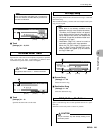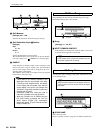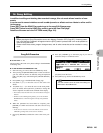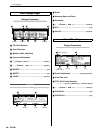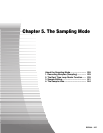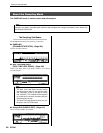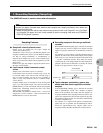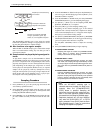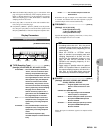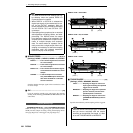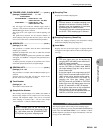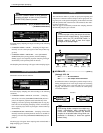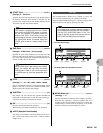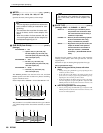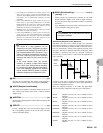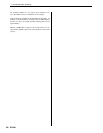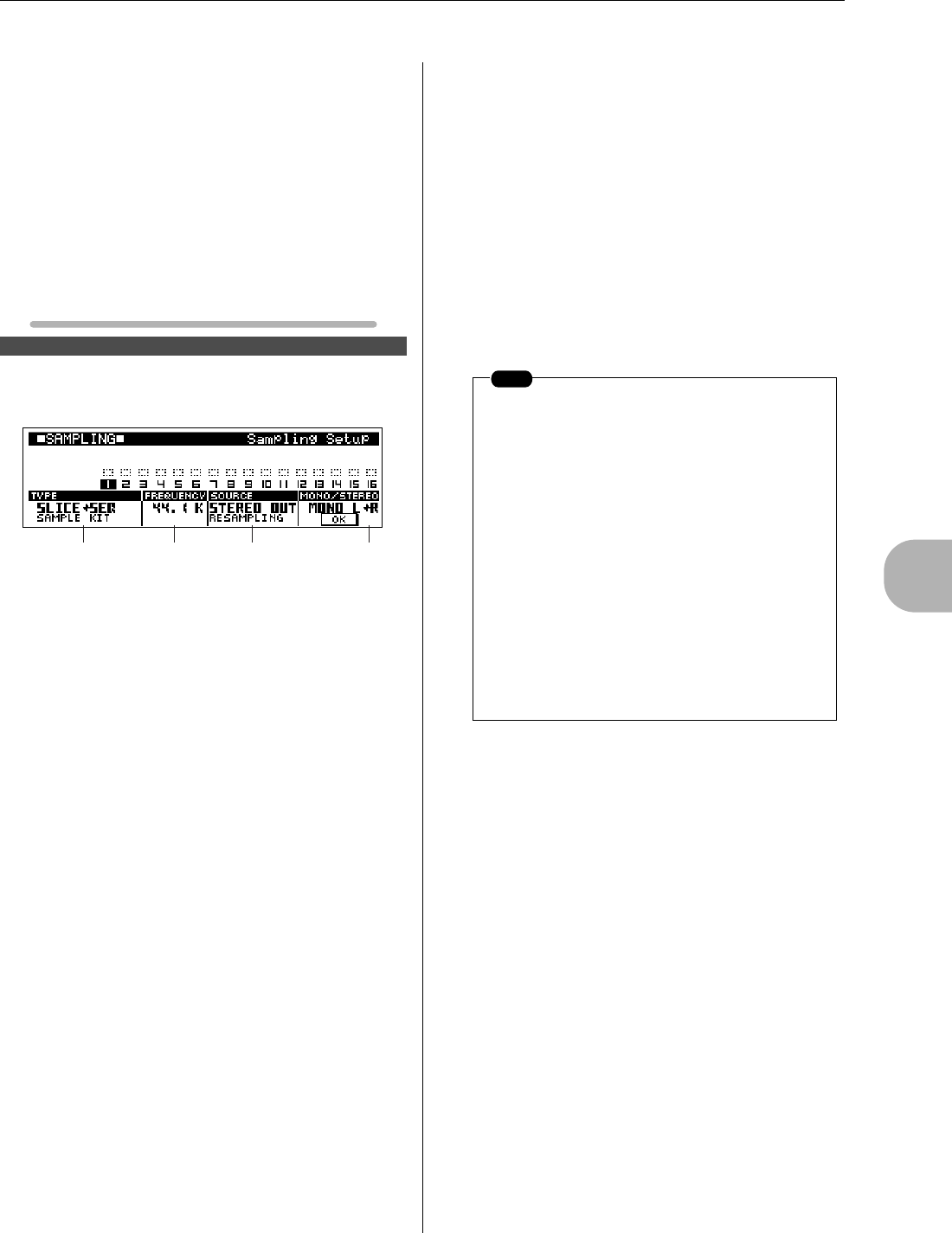
1. Recording Samples (Sampling)
RS7000 231
5
The Sampling Mode
10. When the SLICE+SEQ sampling type is selected the Trim
page will appear automatically when sampling finishes. Use
[Knob 1], through [Knob 4] to set the parameters as required.
When the sampling type is KIT, KIT+NOTE, or PITCH the
sampling mode will be exited.
11. Press [F4] (OK) to execute the Trim and Normalize func-
tions, and go on to the Slice page.
12. Use [Knob 1] (MEAS) ~ [Knob 4] (SENS) to set the parame-
ters, then press [F4] (DO!) to execute the Slice operation and
then [F3] (CREATE) to create the sample and sequence data.
Display Parameters
[STANDBY/START/STOP]
1 TYPE (Sampling Type) ....................................[Knob 1]
[Settings] SLICE+SEQ, KIT, KIT+NOTE, PITCH
SLICE+SEQ......The recorded sample is divided into
“slices”, the size of which are deter-
mined by the specified note length.
The resultant samples are then saved
as a single Sample Kit Voice. The note
data required to play the Sample Kit
Voice thus created is also created
automatically. This process can use
as much as three times the sampling
memory required by normal sampling.
See page 237 for details on the
amount of memory required. It is a
good idea to use the OPTIMIZE func-
tion (Page 259) prior to execution.
KIT ....................The recorded sample is saved as a
sample kit voice, or assigned to the
specified key of existing sample kit
voices.
KIT+NOTE........The recorded sample is saved as a
sample kit voice, or assigned to the
specified key of existing sample kit
voices.
The note data required to play
recorded samples is created automat-
ically.
PITCH ...............The recorded sample is saved as a
Pitched Voice.
Determines the type of sample voice created when a sample
is recorded, and whether the note data required to play the
recorded sample will be created automatically.
2 FREQUENCY....................................................... [Knob 2]
[Settings] 44.1 k (44.1 kHz),
22 kLo (22.05 kHz Lo-Fi),
11 kLo (11.025 kHz Lo-Fi),
5 kLo (5.5125 kHz Lo-Fi)
Specifies the sampling frequency. The 22 kLo, 11 kLo, 5 kLo,
settings add digital noise for a lo-fi sound.
3
SOURCE................................................................ [Knob 3]
[Settings] A/D INPUT, STEREO OUT (RESAM-
PLING), DIGITAL, OPTICAL
A/D INPUT ........A signal applied to the rear-panel
INPUT L and R connectors is sam-
pled.
STEREO OUT (RESAMPLING)
........The signal output from the RS7000
stereo outputs is “resampled”.
DIGITAL............Selects the digital coaxial input when
the optional AIEB2 I/O Expansion
Board is installed.
OPTICAL ..........Selects the digital optical input when
the optional AIEB2 I/O Expansion
Board is installed.
Selects the input via which the signal to be sampled will be
received.
Sampling Setup Page
3 421
[Knob 1] [Knob 2] [Knob 3] [Knob 4]
NOTE
• At settings other than 44.1 kHz, the sound
monitored during recording may be different
from the recorded sound, depending on the
source signal.
• When the DIGITAL or OPTICAL source
option is selected, input sampling rates with
sampling frequencies of 48 kHz, 44.1 kHz,
and 32 kHz are supported. However in any
case, the data will be converted to the
RS7000's own sampling frequency of 44.1
kHz for recording.
• Digital output is possible when the optional
AIEB2 I/O Expansion Board is installed, but
the output sampling frequency is fixed at 44.1
kHz. Also, an input digital signal cannot be
simultaneously monitored via a digital output.



